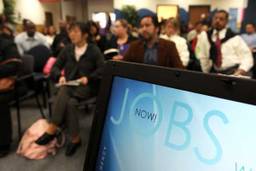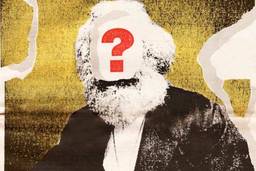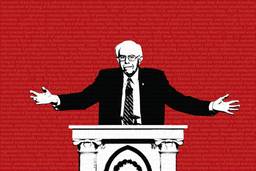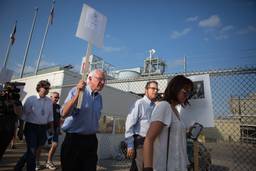The Dangers of Factionalism in DSA
If the Left is to succeed where past generations have failed, it can’t allow sectarian organizations to operate as “parties within a party.”
Bill Barclay, Leo Casey, Jack Clark, Richard Healey, Deborah Meier, Maxine Phillips, Chris Riddiough and Joseph M. Schwartz
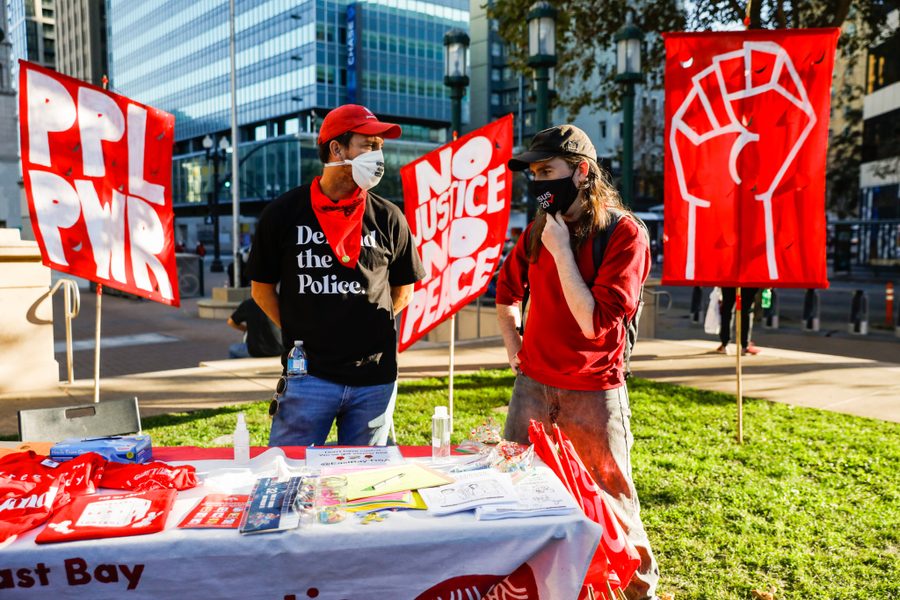
The remarkable growth of Democratic Socialists of America (DSA) over the past four years, from a group with a few thousand members to one with fifteen times that number, has made it the most significant U.S. socialist organization in nearly a century. Successful campaigns to elect open democratic socialists to public office have given the DSA real, if still embryonic, political influence. Four members — Jamaal Bowman, Cori Bush, Alexandria Ocasio-Cortez and Rashida Tlaib — now sit in the House of Representatives. Together with Bernie Sanders in the Senate, this is the largest number of self-avowed democratic socialists ever to hold Congressional office simultaneously, to say nothing of the scores of DSA members who have been elected to state legislatures, county boards and city councils in recent years.
As DSA has grown in size and political influence, so too has the interest it has attracted from small political groups to its left. These “sects,” short for sectarian organizations, see opportunities for themselves in the large numbers of young people new to politics who have joined DSA, viewing them as potential recruits for their emaciated ranks.
The recent announcement of the Trotskyist organization Socialist Alternative (SAlt) that its members were coming aboard, followed by a similar declaration from its leading member, Kshama Sawant, has simply made public a process that has been underway for some time — that various marginal Trotskyist organizations have infiltrated the DSA in a practice known as “entryism.”
What is entryism and what kind of impact could it have on DSA?
Let’s start with this disingenuous passage in the SAlt announcement:
We realize that DSA has a national “ban” on members of democratic centralist organizations joining. However, many DSA members we’ve talked to oppose this Cold War holdover and are excited about Socialist Alternative members joining. While this rule was originally created to prevent Marxists from joining DSA, in recent years, a new generation of DSA activists have changed the organizations’ politics for the better, many of them identifying as Marxist. We think DSA should remove this exclusionary rule as another useful step towards transforming the socialist left into an important component for the emerging class struggles.
We, the undersigned, were involved in the crafting and adoption of the DSA Constitution that the SAlt communique alluded to. We have been a part of DSA’s first generation of national leadership, and we have served in its two predecessor organizations, the New American Movement and the Democratic Socialist Organizing Committee. SAlt’s claim that Marxists have been “banned” from joining DSA is a self-serving fiction, and they know it.
Many in the original leadership of DSA identified as Marxists. Michael Harrington, one of our two national co-chairs and our most prominent leader at the time of DSA’s founding, wrote a number of widely read books in which he made a case for Marx’s vision of socialism as democratic. Others of us who did not call ourselves Marxists never considered that they should be excluded from DSA.
Even if DSA’s founders had not included many self-avowed Marxists, simple logic dictates that if we did not want them in our ranks, our Constitution would have explicitly prohibited them from joining. It did not. Contrary to the fables of SAlt, there are no political or ideological tests for joining DSA, no “bans” on who can join, and no approval process for new members. Don’t take our word for it: Read the document as it’s written. Ask yourself how any member of SAlt, past and present, could have joined DSA.
DSA’s founders believed that we should assume the good faith of those who wanted to join our ranks, but we were not naïve. We were experienced and battle-hardened democratic socialists who had come from every part of the U.S. Left: women and men who had been leaders of the Socialist Party, the Communist Party, and various Trotskyist organizations, who were part of the Old Left of the 1930s and the New Left of the 1960s, and who came out of trade unions and civil rights, feminist and LGBTQ groups.
Assumptions notwithstanding, our rich collective memory told us that there would be small numbers of people who joined DSA in bad faith, that these people would behave in ways that were injurious to the mission and work of DSA, and that this behavior would need to be addressed. We knew from our history that the more successful DSA became, the more people would enter it for reasons other than advancing its mission. In the most extreme of these cases, DSA could well find that it needed to use the most serious penalty a democratic organization can levy against a member — expulsion. And given the gravity of such a step, we wanted to make sure that the Constitution specified its conditions so it would not be employed capriciously. Moreover, we wanted to ensure that there was due process for the member being expelled.
With this in mind, we wrote the following:
Members can be expelled if they are found to be in substantial disagreement with the principles or policies of the organization or if they consistently engage in undemocratic, disruptive behavior or if they are under the discipline of any self-defined democratic-centralist organization. Members facing expulsion must receive written notice of charges against them and must be given the opportunity to be heard before the NPC or a subcommittee thereof, appointed for the purpose of considering expulsion.
The first two grounds for expulsion are self-explanatory. The last ground — that a person was “under the discipline of any self-defined democratic centralist organization” — requires some historical background.
Entryism in the 1930s
In 1928, the U.S. Communist Party banished a small group of individuals from its ranks on the grounds that they were associates of Leon Trotsky, the Bolshevik leader who had been purged from the Communist Party of the Soviet Union during a factional struggle that had broken out after Lenin’s death. For years, these renegades were spurned by the rest of the U.S. Left while they sought readmission to the CP in vain. By the mid-1930s and the start of the Moscow Trials in the Soviet Union, it was clear that their expulsion would not be reversed, and the Trotskyists began to look for ways out of the political wilderness in which they found themselves.
In the American Workers Party (AWP), organized by labor educator A. J. Muste, they saw a path back to relevance. The AWP was an attempt to form a uniquely American revolutionary Marxist party that broke with a U.S. Left whose politics were beholden to different strains of European socialism and communism. In its very brief existence, the AWP had done impressive labor organizing, highlighted by its leadership of the Toledo Auto-Lite strike — one of the epic work stoppages of the 1930s.
Muste was initially skeptical of Trotskyist appeals to combine forces. The AWP was a more substantial organization with deeper roots in the labor movement, and he found the Trotskyist leaders to be dogmatic and uncreative in their politics. Nonetheless, New York intellectuals Sidney Hook and James Burnham convinced him that a merger was a good idea. But Muste did place one condition on agreeing to the merger: that the Workers Party (WP) would not enter the Socialist Party.
This was a key point for Muste because the French Trotskyists, acting under the direction of Trotsky himself, had just allied with the French Socialists in a maneuver that came to be known as the “French turn.” After a short stay in the French Socialists, during which they garnered recruits and promoted their politics, the Trotskyists split its ranks, denounced the Socialists, and reorganized as a purely Trotskyist party. Muste was promised that this would not happen in the United States.
Almost immediately, the Trotskyists went back on their word, forcing the question of entry into the U.S. Socialist Party. Weakened by the loss of long-term political associates who were unwilling to join forces with the Trotskyists, Muste lost the vote and the Workers Party, now firmly under Trotskyist control, entered the Socialist Party.
Once inside, the Trotskyists acted as a “party within a party,” maintaining their own leadership structure (which regularly plotted factional moves within the Socialists) and publishing their own newspaper (which criticized the policies of the Socialist Party and promoted such Trotskyist projects as the founding of a Fourth International). Most important, all of the Trotskyists in the Socialist Party acted as one, under a single organizational discipline: they followed a pre-established “political line” Trotskyist leadership had laid down in all debates and votes inside the Socialist Party.
In short order, the Trotskyists forced a split in the Socialists and left with a thousand new members for their Socialist Workers Party (SWP), including much of the Socialists’ youth section. After this stratagem was complete, Trotskyist leader James Patrick Cannon boasted not only of the Trotskyists’ success in growing their numbers, but also of the fact that they had left the Socialist Party in shambles.
Cannon took pride in having engineered a major setback for the U.S. Left: By the 1930s, the ranks of the Socialist Party had grown dramatically, making it into a potentially significant force in U.S. politics. But after a series of misjudgments and internal crises, cresting with its disastrous co-habitation with the Trotskyists, the Socialist Party ended the decade as a shadow of its former self. For U.S. socialists of the 1930s, a number of whom would co-found the DSA decades later, this was a searing political ordeal they would not forget. Muste himself was deeply shaken by these events, which he would describe as a violation of “working class ethics,” and he left the Trotskyists.
The Trotskyists’ entry into the Socialist Party, organized as a disciplined “party within a party” to garner recruits and split its ranks, established the template for what we now call “entryism” on the U.S. Left.
Entryism in the 1960s
Entryism is not a practice limited to Trotskyist sects, as the experience of Students for a Democratic Society (SDS) in the 1960s shows. The 1960s were a period of mass upsurge, much like the 1930s and our current time. The civil rights movement and the opposition to the war in Vietnam generated unprecedented levels of political activism among young people, and SDS grew mightily among white students, approaching an estimated 100,000 members at its peak. Much like DSA and the earlier Socialist Party youth section, the vast bulk of the SDS recruits were new to politics, making it a rich hunting grounds for small, disciplined ultra-left groups.
One of these was the Progressive Labor Party (PLP). Founded in 1962 after splitting from the Communist Party, PLP was initially supportive of Maoist China but would soon decide that even Mao was insufficiently communist for their tastes. It would then position itself as the most dogmatically Stalinist sect on the U.S. Left.
By 1966, PLP was recruiting inside the SDS, where it urged members to adopt its ultra-Stalinist politics and seize control of the SDS organizational infrastructure. PLP’s efforts at taking over SDS set off a destructive cycle, producing counter-factions that included a group that later became the Weathermen. Within a decade, the SDS would be destroyed.
Herein lie the dual dangers of entryism. On the one hand, it poses a threat to the organizational integrity of an open and democratic organization. Entryism is the sectarian equivalent to a hostile corporate takeover designed to split or seize control of its target organization. At a minimum, it seeks to poach members new to politics who may not be aware of the stratagem being employed. On the other hand, it disrupts the internal democratic processes of that organization, which depend on members engaging in honest debate and deliberation over policies and political strategies.
Entryists enter all debates and votes not with an open mind and a willingness to be persuaded, but with the express intent of advancing a political line that has already been decided in advance. Such tactics can quickly poison democratic political cultures, especially when opponents resort to the kinds of tactics they did in SDS.
To be politically effective, democratic socialist organizations need to develop methods of unity in action. These include open and full discussions of issues, democratic decision-making processes, and a commitment by all not to impede or undercut decisions once they have been democratically made. When entryist sects function as a disciplined “party within a party,” they undermine that unity in action.
Just as DSA’s founders remembered what the Trotskyists did to the Socialist Party in the 1930s, its first generation of members saw what Progressive Labor did to SDS in the 1960s. Two organizations that gave the Left its best chance to exercise real political power in the U.S. had ended disastrously, in large measure because of sectarian entryism. (These techniques similarly sabotaged a promising national movement of socialist-feminists in the 1970s.)
DSA’s Constitution singles out members “under the discipline of any self-defined democratic-centralist organizations” for possible expulsion to prevent these very outcomes. The drafters chose their words carefully: they do not specify a political belief or even membership in an organization, instead targeting those who aim to form a “party within a party” like the Trotskyists and the Stalinist PLP before them. This language has everything to do with ensuring the survival of an open, democratic institutions and absolutely nothing to do with “Cold War” politics.
The Socialist Alternative understands this, despite its claims to the contrary. After all, SAlt is the progeny of one of the best-known entryist projects in international socialist history, the Militant Tendency of the British Labour Party. From their founding in 1964 to their expulsion in the 1980s, these Trotskyists operated as a disciplined “party within a party” inside of Labour, using the entryist tactics described above.
SAlt was founded as Labor Militant in 1986 by members of the British Militant Tendency who had moved to the United States as part of an organized effort to create a Trotskyist international. (It adopted its current name in the late 1990s.) Perhaps unsurprisingly, the organization has splintered into several smaller factions since its founding amid personality conflicts, and there now exist competing internationals, although SAlt remains the largest group in the United States.
Why, then, is it trying to join DSA? SAlt’s own statement indicates that it opposes the very strategy that has allowed DSA to grow over the last four years — campaigns to elect democratic socialists to office, using the Democratic Party ballot line — so it would be hard to make a case for a political convergence. In this light, SAlt’s call to eliminate any barriers to entryism in DSA constitution is telling.
Openings for socialists don’t come along often in United States: only three times in the last 100 years has the Left had a change to make a major political breakthrough. DSA, with its rapid growth and electoral victories, could be central to such a breakthrough. Which is why we must acknowledge the deleterious role entryism played in the radical movements of the 1930s and 1960s. If we are to succeed where past generations have failed, it is vital that we not repeat their mistakes.
Bill Barclay is an economist who served as Political Secretary of NAM and was a member of its National Committee; he was a member of DSA’s National Political Committee at its founding.
Leo Casey is a teacher unionist who was a member of NAM’s National Committee; he served as the National Field Director of DSA and a member of its National Political Committee at its founding.
Jack Clark is a workforce educator who was the first national organizer of DSOC and member of its National Committee; he was a member of DSA’s National Political Committee at its founding.
Richard Healey is a political organizer and strategist who served as National Director of NAM and was a member of its National Committee; he was a member of NAM’s National Political Committee at its founding.
Deborah Meier is an educator who was a Vice-Chair of DSOC and a member of its National Committee; she was a member of DSA’s National Political Committee at its founding.
Maxine Phillips is an editor who served in that role for the national publication of DSOC and DSA, Democratic Left; she was a member of DSA’s National Political Committee at its founding, and would later serve as its Executive Director.
Chris Riddiough is a strategic planner in the field of information technology who was a member of NAM’s National Committee; she was a member of DSA’s National Political Committee at its founding, and would later serve as its Executive Director.
Joseph M. Schwartz is a political scientist who was a national organizer of DSOC’s Youth Section and a member of its National Committee; he was a member of DSA’s National Political Committee at its founding and for many decades after.
